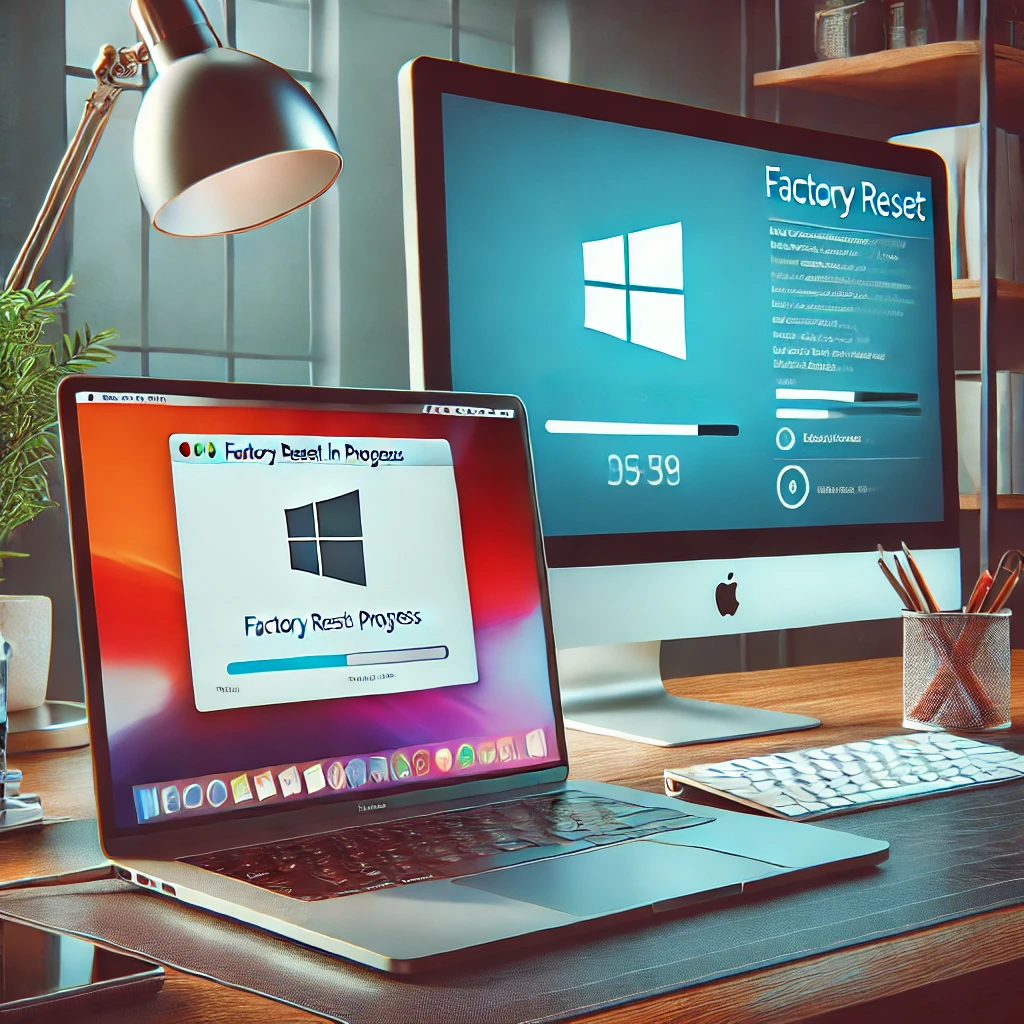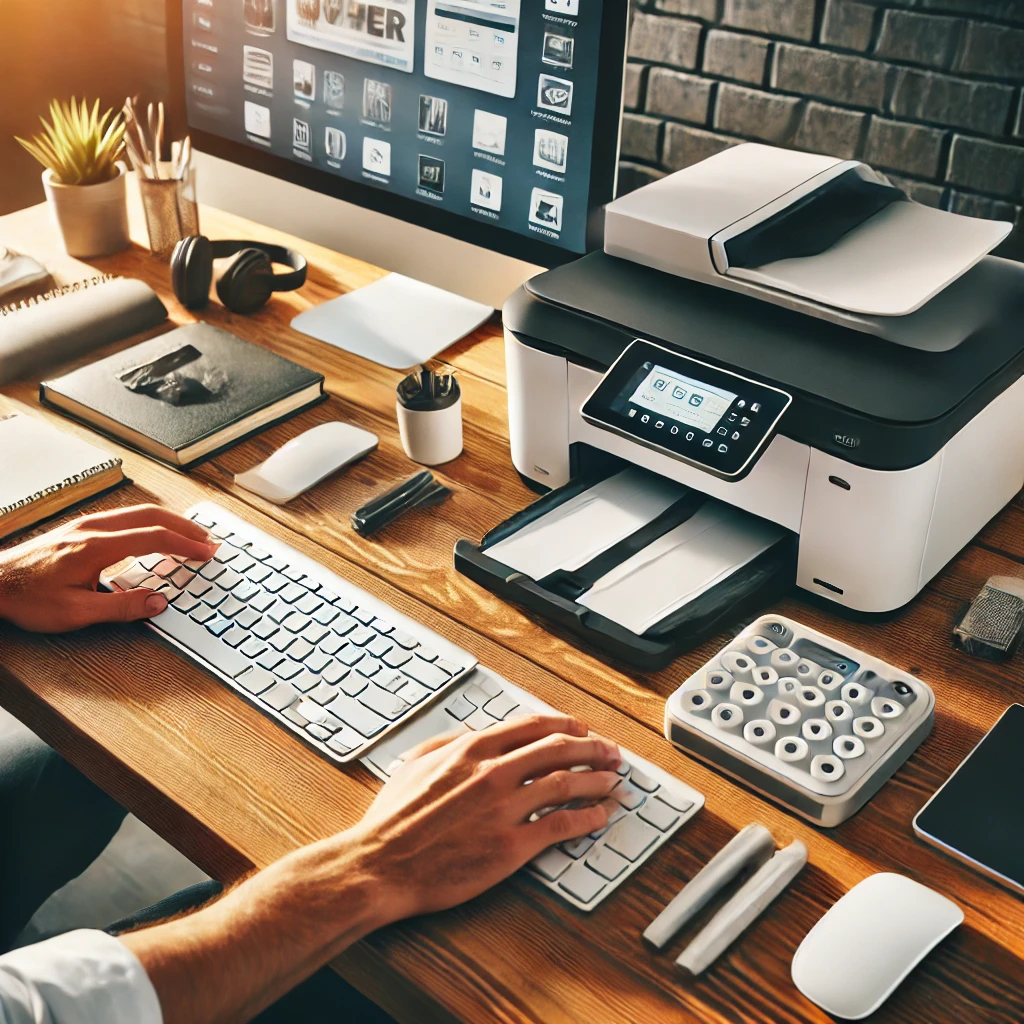Over time, your computer can slow down, get cluttered, or run into system issues. Sometimes, a factory reset is the best way to restore its performance, remove malware, or prepare it for resale. But resetting a computer can seem daunting—what about your files, software, and settings?
Don’t worry! This step-by-step guide will walk you through everything—from backing up your important data to safely resetting your Windows PC or MacBook/iMac. Let’s get started! 🚀
🔹 Why Should You Reset Your Computer?
A factory reset erases everything and restores your system to its original settings, just like it was when you first bought it. Here are some common reasons why you might need a reset:
✅ Boost Speed & Performance – Removes junk files and unnecessary programs.
✅ Fix System Errors & Crashes – Resolves software issues causing instability.
✅ Remove Viruses & Malware – Cleans deep-rooted infections.
✅ Prepare for Resale or Gifting – Protects your personal data before handing it over.
✅ Start Fresh – Clears out clutter and gives your PC or Mac a fresh start.
⚠ Warning: A factory reset wipes everything, so follow the preparation steps below to avoid losing important data!
🛑 Things to Do Before Resetting Your Computer
Before jumping into the reset process, make sure you prepare properly to prevent data loss and ensure a smooth transition.
1️⃣ Back Up Your Important Files & Data
Since resetting your computer will delete ALL personal files, create a backup of your:
✔ Documents, Photos, Videos & Music – Store them on an external hard drive or USB drive.
✔ Cloud Storage – Upload files to Google Drive, OneDrive, iCloud, or Dropbox.
✔ Bookmarks & Passwords – Export saved bookmarks and passwords from your browser.
✔ Emails & Contacts – Sync them with your email provider (Gmail, Outlook, etc.).
💡 Recommended External Resource: Learn how to back up files on Google Drive 👉 Google Drive Backup Guide
2️⃣ Save Software Licenses & Activation Keys
After a reset, you’ll need to reinstall your apps, so make sure you have:
✔ Microsoft Office, Photoshop, or any paid software activation keys.
✔ Windows or macOS product key (for reinstallation).
✔ Games & Steam Library backups (if applicable).
💡 Recommended External Resource: Free backup software like EaseUS Todo Backup 👉 Best Free Backup Software
3️⃣ Disconnect External Devices
Unplug any:
🔌 USB drives
🖨️ Printers
🎧 External speakers/headphones
📡 Wi-Fi adapters
Keeping them unplugged prevents errors during the reset process.
4️⃣ Keep Your Laptop Plugged In 🔌
Factory resets can take 30 minutes to several hours. If your laptop turns off during the process, it could cause corruption issues. Make sure it’s plugged in!
🔹 How to Reset a Windows Laptop or Desktop
💻 This method works for Windows 11, Windows 10, and Windows 8.1.
✅ Method 1: Reset Windows Using Settings (Recommended)
1️⃣ Open Settings
- Press Windows + I or go to Start > Settings.
2️⃣ Go to Update & Security
- Windows 10: Click Update & Security > Recovery.
- Windows 11: Click System > Recovery.
3️⃣ Under “Reset this PC,” click “Get Started.”
4️⃣ Choose a reset option:
- Keep My Files – Removes apps & settings but keeps your personal files.
- Remove Everything – Recommended if you’re selling or want a fresh start.
5️⃣ Choose Reinstallation Type:
- Local Reinstall – Uses existing Windows files (faster).
- Cloud Download – Downloads a fresh copy of Windows (recommended).
6️⃣ Click Next, then Reset to begin. Your computer will restart and begin the process.
💡 Recommended External Resource: Learn more about resetting Windows from Microsoft’s official guide 👉 Windows Reset Guide
✅ Method 2: Reset Windows Using Advanced Startup (If Your PC Won’t Boot)
If your computer won’t start normally, follow these steps:
1️⃣ Restart your computer and press F11 (or hold Shift + Restart).
2️⃣ Select Troubleshoot > Reset this PC.
3️⃣ Follow the on-screen instructions to complete the reset.
💡 This method is useful for fixing blue screen errors and startup issues.
🍏 How to Reset a MacBook or iMac to Factory Settings
✅ Step 1: Sign Out of iCloud & Apple Services
1️⃣ Click Apple Menu > System Settings > Apple ID.
2️⃣ Click Sign Out.
3️⃣ Disable Find My Mac (to avoid activation lock issues).
✅ Step 2: Erase the Mac Hard Drive Using Disk Utility
1️⃣ Restart your Mac and immediately press Command (⌘) + R until the Apple logo appears.
2️⃣ Select Disk Utility, then click Continue.
3️⃣ Choose Macintosh HD, then click Erase.
4️⃣ Select APFS or MacOS Extended (Journaled) as the format.
5️⃣ Click Erase, then exit Disk Utility.
✅ Step 3: Reinstall macOS
1️⃣ In macOS Utilities, click Reinstall macOS.
2️⃣ Follow the on-screen instructions.
3️⃣ Once completed, your Mac will restart with a fresh installation.
💡 Recommended External Resource: Learn more from Apple’s official guide 👉 Mac Reset Guide
✅ What to Do After Resetting Your Computer
After the reset, here’s how to get back up and running quickly:
🔄 Reinstall Essential Software – Install your browser, Office, and security apps.
💾 Restore Your Backed-Up Files – Copy back your important files.
🔄 Update Your OS & Drivers – Install Windows/macOS updates for security.
🛡️ Set Up Security – Enable firewall, antivirus, and privacy settings.
🎉 Final Thoughts
A factory reset is a powerful way to fix performance issues, remove malware, and refresh your system. Whether you’re troubleshooting your PC, cleaning up your Mac, or preparing your device for resale, this guide ensures a safe and smooth reset process.
💬 Did this guide help you? Let us know in the comments below! 🚀
// You May Like //
🔗 Computer Won’t Turn On? How to Fix It Step-by-Step
🔗 How to Increase RAM on Android Without Root
🔗 How to Stop Your Phone from Being Tracked- Privacy Guide
![]()





